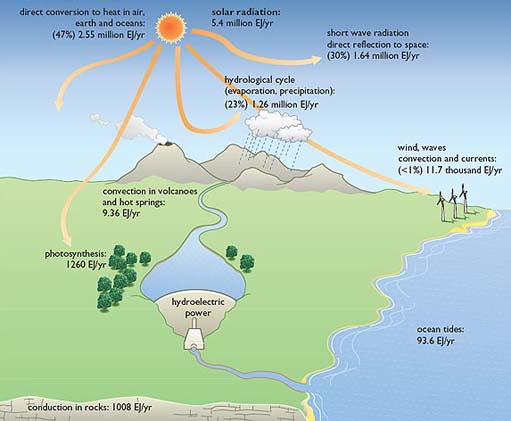4 Renewable energy sources
Fossil and nuclear fuels are often termed non-renewable energy sources. This is because, although the quantities in which they are available may be extremely large, they are nevertheless finite and so will in principle 'run out' at some time in the future.
By contrast, hydropower and bioenergy (from biofuels grown sustainably) are two examples of renewable energy sources – that is, sources that are continuously replenished by natural processes. Renewable energy sources are essentially flows of energy, whereas the fossil and nuclear fuels are, in essence, stocks of energy.
World-wide, there has been a rapid rise in the development and deployment of renewable energy sources during the past few decades, not only because, unlike fossil or nuclear fuels, there is no danger of their 'running out', but also because their use normally entails no (or few) greenhouse gas emissions and therefore does not contribute to global climate change.
Renewable energy sources range from solar power in its various forms, through bioenergy and hydro to wind, wave, tidal and geothermal energy (Figure 27).

The general nature and scope of the various 'renewables' can be briefly summarised as follows, beginning with the most important renewable source, solar energy.
